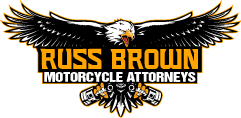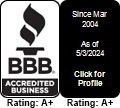Rider Tips
The best things you can do to prevent accidents and injuries are to be aware of your surroundings and drive defensively. Wear the proper gear, take a motorcycle safety class and learn about the most common types of motorcycle accidents. You should fully insure yourself and your bike, including uninsured and underinsured motorist coverage and Guaranteed Asset Protection (GAP) insurance if your bike is not paid for.
If you’re in a crash, keep your motorcycle accident checklist with pen and camera handy so you get all the details you will need to follow up with an expert afterwards.
Accident Checklist
If you are in a motorcycle accident, there are a few things you should do immediately if you’re able to. If you’re uninjured and your bike has been moved out of traffic, complete the following checklist before to ensure you obtain all the information you need.
The information obtained from the accident checklist will be helpful if you need to file an insurance claim or experience any injuries.
ASSESS THE SITUATION
- If someone is hurt, call 911 immediately
- If no one is hurt but there is a lot of damage, call the Police
- Police Report – Make Sure Your Version is Accurate
GET OFF THE ROAD
- If it’s safe to move your vehicle, do so. If it’s not safe to move your vehicle, don’t!
SEEK MEDICAL TREATMENT
- Even if you feel ok, many injuries are not realized right away.
GET AS MUCH INFORMATION AS POSSIBLE
- Other Driver’s Information
- Name
- Address
- Phone Number
- Driver’s license number
- Email Address
- Make, model and year of the vehicle
- License plate number
- Insurance carrier and policy number
- Witness Information
- Name
- Phone Number
- Email Address
- Take pictures if safe to do so
- Damage to your motorcycle
- People involved in the accident
- Other Driver’s license and insurance info
- Accident location and road conditions
- Get Police information
- Officer’s name and agency
- ID number
- Police report number
- Station location
KEEP RECORD
- Of all doctor’s visits & notes, time off work, correspondence with insurance, anything and everything related to the accident.
CONTACT YOUR INSURANCE COMPANY
- To report the accident
- DO NOT contact the other party’s insurance
CALL RUSS BROWN MOTORCYCLE ATTORNEYS® FOR A FREE CONSULTATION
- Insurance companies may try to get you to settle quickly and for less. DON’T! Be sure to talk to one of our experience motorcycle accident attorneys before you do anything!
Protect Yourself
No matter how careful and prepared a rider you may be, there are a lot of drivers on the road now who are not paying attention to their surroundings. They’re texting, eating, navigating and in general, taking their eyes off the road. A resulting collision can mean serious injuries to motorcyclists and damage to your bike. It is very rare that an injured motorcyclist is able to get his bills paid, get reimbursed for lost wages and otherwise be made whole for his injuries when the automobile driver only has $15,000 in liability insurance. When you get minimum coverage you’re taking a huge gamble and putting your ability to recover after an accident in a complete stranger’s hands. A surprising number of drivers have no insurance. We as riders, need to depend on ourselves and protect ourselves accordingly.
INSURANCE
Motorcycle Insurance requirements vary from state to state so the best person to give you insurance advice is your insurance broker (we do not sell insurance) but here are some insurance basics:
Uninsured or Underinsured Motorist Coverage (UM/UIM)
- Do not place your ability to recover from an accident in someone else’s hands. Getting UM/UIM insurance almost guarantees your ability to recover after an accident if the other party was at fault, depending on your injuries and damages. The more UM/UIM you get – $100K or $300K or more – the more likely you will be able to recover.
- No one should ride without (UM/UIM) coverage. It’s absolutely critical. Once you get the bike–first, save enough money to buy the insurance, then save enough money to buy the gas.
- If possible, address all aspects of coverage including: liability, property damage, collision, comprehensive and medical coverage.
Umbrella Insurance
- Covers extensive damages as well as UM/UIM
- Get the best you can afford
Additional Collision Coverage
- While an insurance company may pay for the motorcycle accident damage to your sport bike or Harley, what about your accessories or that expensive paint job? Always save receipts when you add all that custom chrome to your bike or spend $5,000 on a paint job. We recommend getting additional collision coverage for the custom work on your bike to be sure you are properly compensated for the repair.
Contrary to popular belief, almost all accidents involving a motorcycle are NOT the result of carelessness by the motorcyclist. Most of the individuals involved in these accidents sustain severe injuries and the cases could take many years to reach a judgment. It can be impossible for someone who had been seriously injured in a motorcycle accident to support themselves financially during the lengthy process of the lawsuit. Bottom line is get the best coverage you can afford; your future comfort and livelihood may depend on it.
GEAR LIST
Aside from the most obvious injuries that can occur without the proper gear, road rash can be extremely painful. Suit up every time. No exceptions.
D.O.T. Helmet– certified by the Department of Transportation
- Novelty helmets don’t do a thing, and brain injuries are life-changing.
- Wearing a non-DOT helmet is a huge risk, not only to your head but it can also reduce your recovery.
- Most importantly, if you wear the right helmet, you are 3 times more likely to survive a head injury
- Keep it securely fastened or it may come off your head before it gets a chance to protect you
Face or Eye Protection
- In most states, eye protection is required unless your motorcycle is equipped with a protective windscreen
Protective Clothing
- Leather or Kevlar, protective body armor for entire body.
- Motorcycle gloves
Tough Footwear
- Steel toed boots that come up over your ankle are best.
- Heels should be short so they do not catch on rough surfaces
- Tuck in your laces so they won’t catch on your motorcycle
- Properly sized bike
- Your feet should reach the ground while you are seated on your motorcycle
- A motorcycle needs more attention than a car, check each of the following before you ride,
- Tires for sufficient tread and air
- Headlight, tail light, brake light, turn signals, horn and two mirrors are in working condition
- Oil and Fluid levels
- Battery Condition
- Chain/Belt and Kick-stand condition
Tools & Emergency supplies
- Jumper cables, mini battery charger
- Riders Helping Riders card for when you are riding alone
- Accident checklist, pen, & camera
Prevention
As it is true with most things in life, the key to preventing motorcycle accidents is to be knowledgeable and prepare for emergencies before they occur. We recommend every rider take motorcycle safety classes and stay up-to-date on your state and federal motorcycle laws. Another way to prevent accidents from happening is to be aware of the common types of accidents that occur to bikers across the country. Read our accident scenarios below and watch out for these instances while on the road.
All these tips combine with our accident checklist to help you enjoy fun, stress-free rides.
BEST PRACTICES FOR MOTORCYCLISTS
- Ride to your abilities
- Avoid freeway and canyon riding until you are experienced enough to do so
- Avoid riding in inclement weather
- Be visible with the proper clothing and a working headlight
- See our Gear List
- Communicate your intentions with proper signals, brake light, and lane position
- Maintain an adequate space cushion
- Scan your path of travel
- Identify and avoid hazards such as:
- Erratic drivers
- Potholes and road erosion
- Roads slick from rain or ice
- Wet leaves and other debris
- Be prepared to act
- Don’t drink and ride
- Even if justified don’t provoke someone in a vehicle, report them instead
COMMON ACCIDENT SCENARIOS
- Intersections
- Watch for motorists making sudden left hand turns. This is the most likely scenario for a motorcycle accident to occur.
- Lane Changes
- Coming in and out of driveways
- Potholes
- Excessive speed
- Lane sharing
MOTORCYCLE SAFETY COURSE
Even experienced riders can benefit from taking a professional Motorcycle Safety class. Instructors share a multitude of practical tips to improve your riding skills and the latest bike handling tricks. It’s never a bad idea to have a refresher class and increase your knowledge and awareness on the road. Most courses provide both classroom style instruction as well as hands-on riding courses in off-road, controlled environments.
You learn and refine the following skills:
- Using the clutch friction zone for control
- Progressive brake pressure to stop without skidding
- Counterweight techniques
- Low-speed maneuvering
- Limited space maneuvers
- Techniques for crossing over obstacles
- Proper curve judgement
- Leverage for lifting heavy bike techniques





#RUSSBROWNROCKS